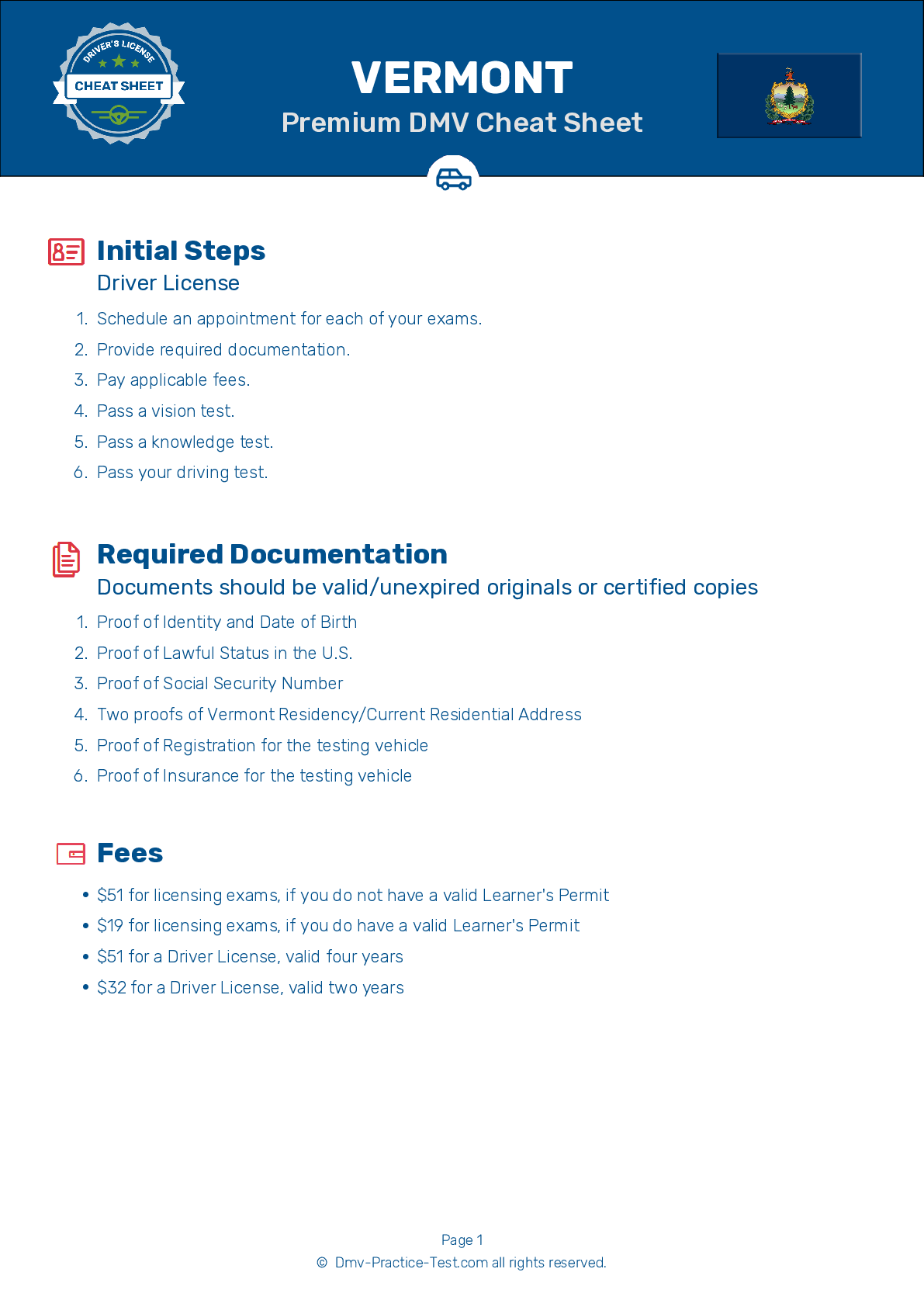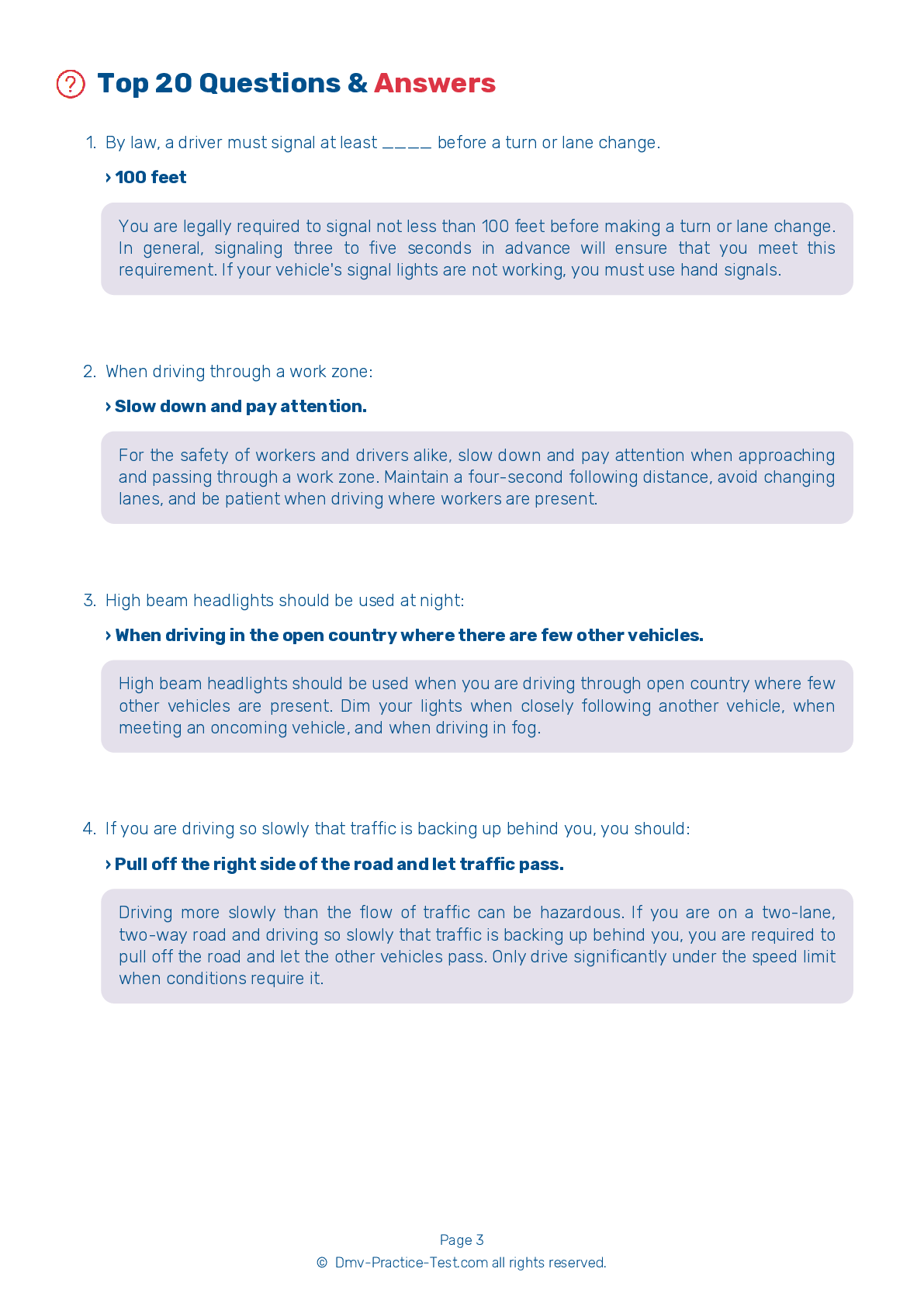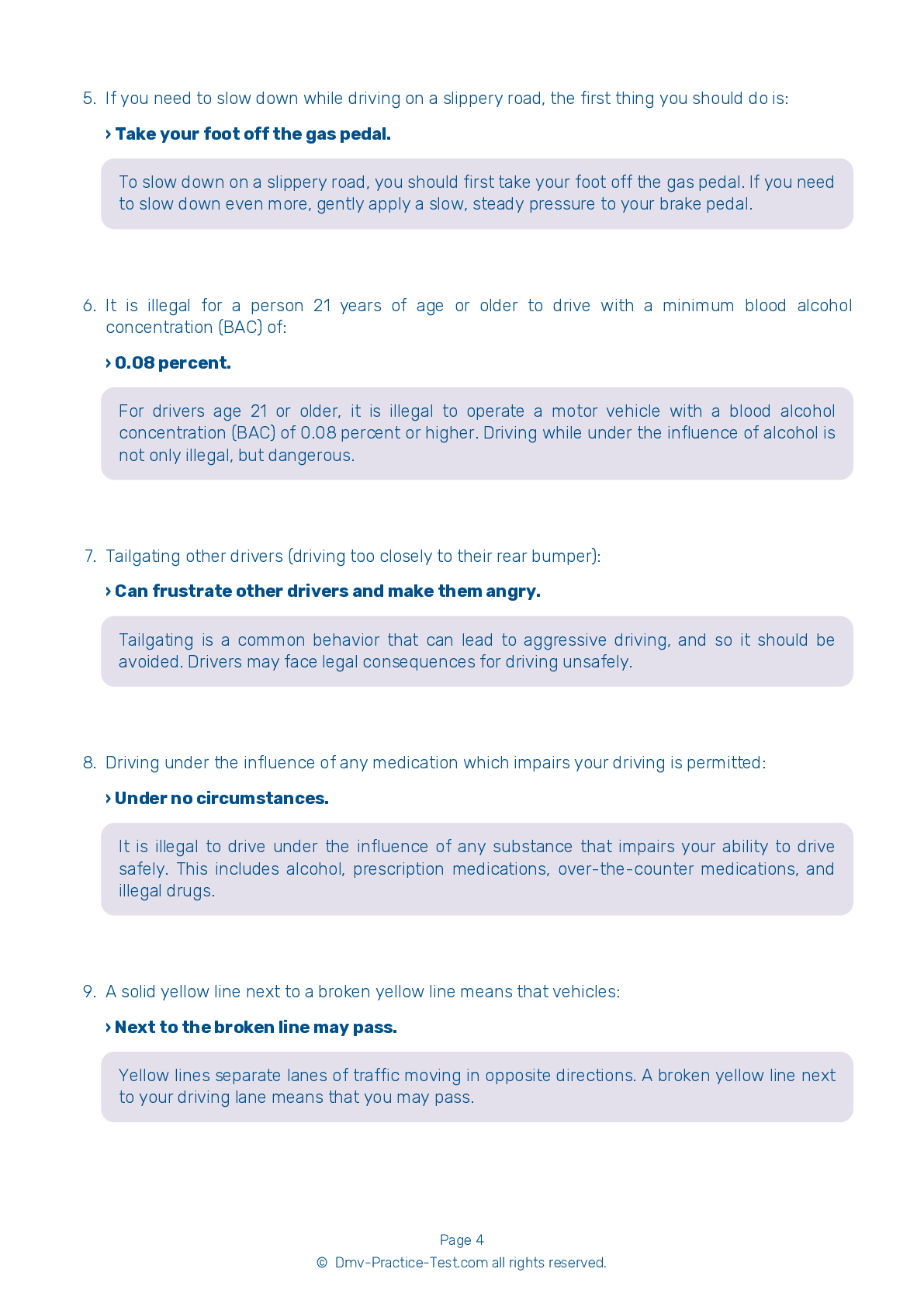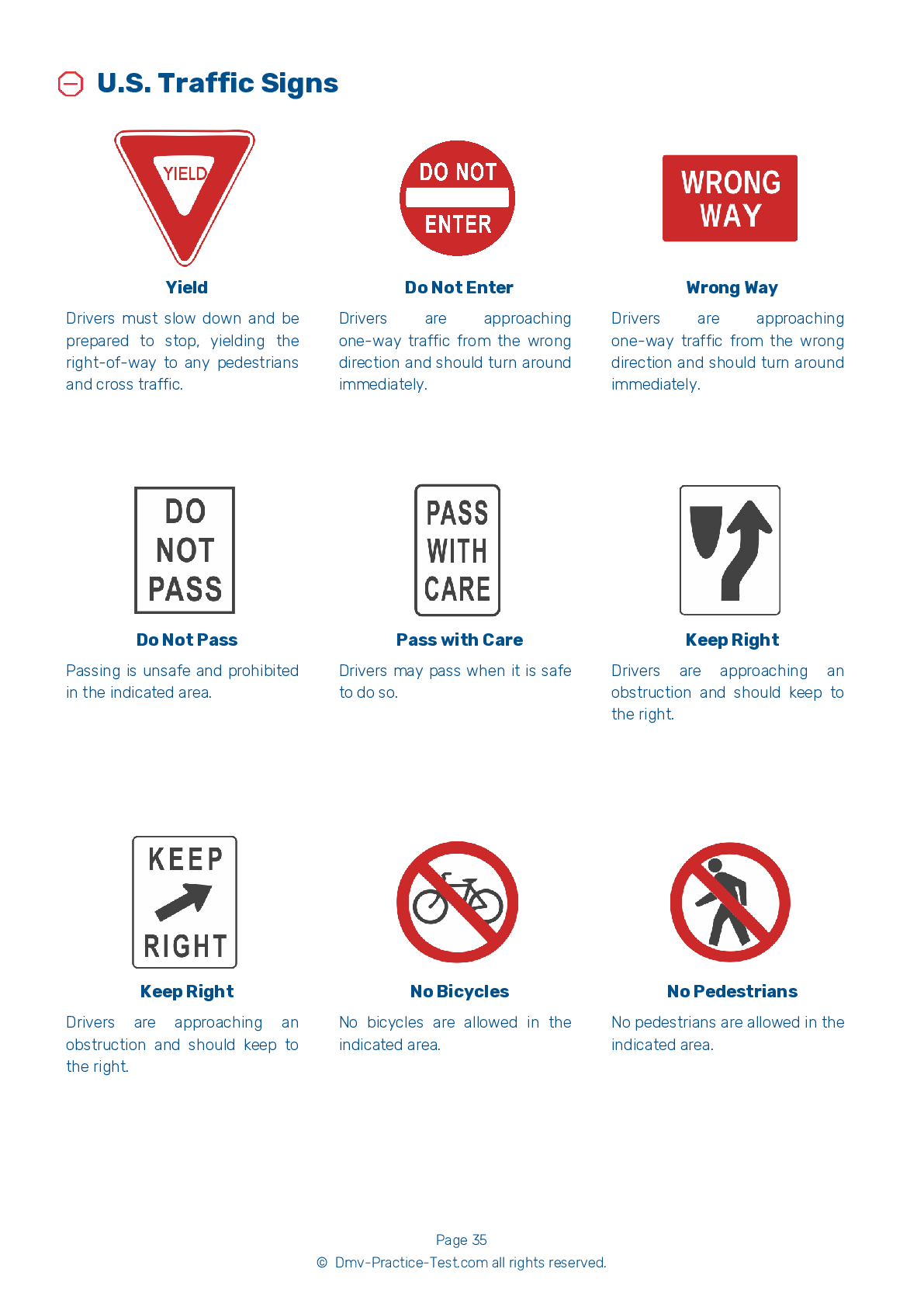FREE Vermont DMV Practice Test #22 Page 3 of 3
The Vermont DMV practise examinations have been updated for January 2025. It includes questions based on the Vermont Driver Handbook's most significant traffic signals and legislation for 2025. Use actual questions that are very similar (often identical!) to the DMV driving permit test and driver's licence exam to study for the DMV driving permit test and driver's licence exam.
On the practise exam, each question gets a tip and explanation to help you remember the concepts. The written component of the official Vermont DMV test will include questions about traffic rules, traffic signs, and driving statutes, as well as knowledge from the Driver Handbook.
To obtain a passing grade, you must correctly answer 16 of the 20 questions. Use the practise exam provided by the Vermont Department of Motor Vehicles to help you prepare for your instruction permit or driver's licence.
The DMV exam is available in several languages.
Using any kind of testing assistance will result in an automatic fail, and the DMV may take additional action against your driver's licence, so stay away from it.
14 . Before entering a roundabout, you must slow down and yield to:
When entering a roundabout, you must yield to pedestrians, bicyclists, and vehicles that are already in the roundabout.
15 . Which of the following is a safe way to drive through a curve?
You should slow down as you enter a curve and increase your speed gradually as you exit. Increasing your speed as you enter a curve will make it more difficult to control your vehicle.
16 . Your vehicle's stopping distance increases when stopping:
Stopping distances increase on wet or icy roads. Stopping distances also increase on road surfaces covered in loose gravel or stones.
17 . An intersection has no traffic signs or signals. You arrive at the same time as a vehicle to your right. You should:
When two vehicles arrive to an uncontrolled intersection at the same time, the vehicle on the right has the right-of-way. Once the vehicle on the right has safely passed through the intersection, the other driver may proceed.
18 . If there are two railroad tracks next to each other:
If there are two railroad tracks next to each other, watch for a second approaching train after one train passes. Do not begin to cross the tracks until you’re sure no train is approaching from either direction on either track.
19 . This sign means:
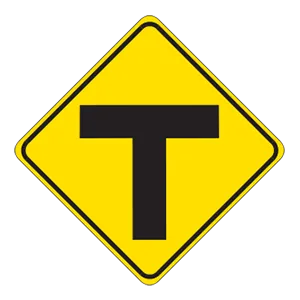
Warning signs prepare drivers for upcoming road conditions and hazards and are usually yellow with black markings. This sign warns drivers that they are approaching a T intersection and should prepare to turn either right or left.
20 . Smoking and preparing to smoke while driving:
Smoking while driving can create dangerous distractions by causing you to take your hands off the wheel and/or your eyes off the road.
See the exact questions that will be on the 2025 Vermont DMV exam.
99.2% of people who use the cheat sheet pass the FIRST TIME
LT gives us an insight on how the cheat sheet provided her with all the study questions she needed before taking her test.
Joe initially studied with the handbook and failed his test, he eventually found us online, studied and pass his test the first time around.
2025 Vermont | Frequently Asked Questions
1. Not checking mirrors and blind spots before changing lanes or turning.
2. Speeding or driving too slowly for the conditions or posted speed limit.
3. Not coming to a complete stop at stop signs or red lights.
4. Incorrect signalling or not signalling at all.
5. Poor parking, especially parallel parking.
Remember, practice makes perfect, so take time to hone your skills.
